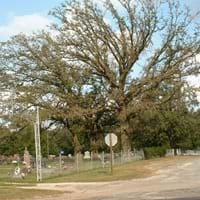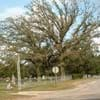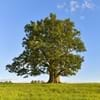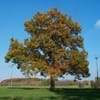Life Span
Perennial
Annual and Perennial
Type
Tree
Tender Perennial
Origin
North America, United States, Northeastern United States, Mid-Atlantic United States, Southeastern United States, North-Central United States, Central United States, South-Central United States, Texas, Canada
South Africa
Types
Not Available
Osteospermum acanthospermum, Osteospermum amplectens, Osteospermum burttianum
Number of Varieties
Not Available
Habitat
Woodland Garden Canopy
Coastal Regions, Sandy areas, Terrestrial
USDA Hardiness Zone
3-8
10-11
AHS Heat Zone
9-1
Not Available
Sunset Zone
A2, A3, 1a, 1b, 2a, 2b, 3a, 3b, 4, 5, 6, 7, 8, 9, 10, 11, 14, 15, 16, 17, 18, 19, 20, 21, 22, 23
8, 9, 12, 13, 14, 15, 16, 17, 18, 19, 20, 21, 22, 23, 24
Habit
Oval or Rounded
Clump-Forming
Flower Color
Red, Light Green, Chartreuse
White, Purple, Blue Violet
Flower Color Modifier
Bicolor
Bicolor
Fruit Color
Brown, Chocolate
Not Available
Leaf Color in Spring
Green, Light Green, Dark Green
Green
Leaf Color in Summer
Dark Green
Green
Leaf Color in Fall
Dark Green, Gold, Brown
Green, Blue Green
Leaf Color in Winter
Not Available
Light Green
Leaf Shape
Lobed
Irregular
Plant Season
Spring, Summer, Fall, Winter
Spring, Summer, Fall
Sunlight
Full Sun
Full Sun, Partial Sun
Type of Soil
Clay, Loam, Sand
Loam
The pH of Soil
Neutral, Alkaline
Neutral
Soil Drainage
Well drained
Well drained
Bloom Time
Spring, Late Spring
Late Spring, Early Summer, Summer, Late Summer, Early Fall, Fall
Tolerances
Soil Compaction
Drought
Where to Plant?
Ground
Container
How to Plant?
Seedlings, Transplanting
Seedlings, Stem Cutting
Plant Maintenance
Medium
Medium
Watering Requirements
Average Water Needs, Keep the ground moist but not water-logged, Needs a lot of water initially, occasional watering once established, Water Deeply
Do Not over Water, Keep ground moist
In Summer
Lots of watering
Lots of watering
In Spring
Moderate
Moderate
In Winter
Average Water
Average Water
Soil pH
Neutral, Alkaline
Neutral
Soil Type
Clay, Loam, Sand
Loam
Soil Drainage Capacity
Well drained
Well drained
Sun Exposure
Full Sun
Full Sun, Partial Sun
Pruning
Remove branches, Remove damaged fruit, Remove damaged leaves, Remove dead branches, Remove dead leaves, Remove dead or diseased plant parts, Remove deadheads
Remove damaged leaves, Remove dead branches, Remove dead leaves
Fertilizers
All-Purpose Liquid Fertilizer, High amounts of nutrients, organic fertlizers
All-Purpose Liquid Fertilizer
Pests and Diseases
Red blotch
Red blotch
Plant Tolerance
Drought
Drought
Flowers
Insignificant
Showy
Flower Petal Number
Not Available
Single
Foliage Texture
Coarse
Medium
Foliage Sheen
Glossy
Not Available
Attracts
Birds
Bees, Birds, Butterflies
Allergy
Hay fever, Itchy eyes, Runny nose, sneezing, Watery eyes, Whooping Cough
Not Available
Aesthetic Uses
Not Used For Aesthetic Purpose
Beautification, Showy Purposes
Beauty Benefits
Not Available
Not Available
Environmental Uses
Air purification, Nesting sites for birds, Shadow Tree, Shelter for wildlife, Wildlife
Air purification
Medicinal Uses
Astringent, Cramps, Tonic
Not Applicable
Part of Plant Used
Inner Bark, Leaves, Seeds
Flowers
Other Uses
Tannin, Used as a dye, Used as fuel, Used as insect repellent, Used for woodware
Used as Ornamental plant
Used As Indoor Plant
No
No
Used As Outdoor Plant
Yes
Yes
Garden Design
Feature Plant, Shade Trees
Bedding Plant, Container, Cutflower, Foundation, Groundcover, Hanging Basket, Mixed Border, Rock Garden / Wall
Botanical Name
QUERCUS macrocarpa
OSTEOSPERMUM fruticosum
Common Name
Burr Oak, Mossycup Oak
Shrubby Daisybush, Trailing African Daisy
In Hindi
Burr Oak
Blue Eyed Daisy Plant
In German
Burr Oak
Blue Eyed Daisy Pflanze
In French
Burr Oak
Blue Eyed Daisy Plante
In Spanish
Burr Oak
Planta observada azul de la margarita
In Greek
Burr Oak
Μπλε Eyed Daisy Φυτών
In Portuguese
Burr Oak
Planta da margarida de olhos azuis
In Polish
Burr Oak
Blue Eyed Daisy roślin
In Latin
Burr Oak
Daisy Blue Eyed Planta
Phylum
Magnoliophyta
Magnoliophyta
Class
Magnoliopsida
Magnoliopsida
Family
Fagaceae
Asteraceae
Genus
Quercus
Osteospermum
Clade
Angiosperms, Eudicots, Rosids
Angiosperms, Asterids, Eudicots
Tribe
Cherokee
Calenduleae
Subfamily
Not Available
Asteroideae
Number of Species
Not Available
Properties of Burr Oak and Blue Eyed Daisy Plant
Wondering what are the properties of Burr Oak and Blue Eyed Daisy Plant? We provide you with everything About Burr Oak and Blue Eyed Daisy Plant. Burr Oak doesn't have thorns and Blue Eyed Daisy Plant doesn't have thorns. Also Burr Oak does not have fragrant flowers. Burr Oak has allergic reactions like Hay fever, Itchy eyes, Runny nose, sneezing, Watery eyes and Whooping Cough and Blue Eyed Daisy Plant has allergic reactions like Hay fever, Itchy eyes, Runny nose, sneezing, Watery eyes and Whooping Cough. Compare all the properties and characteristics of these two plants. Find out which of these plant can be used as indoor plant. If you are interested to decorate your house and garden, find out aesthetic uses, compare them and select the plant which will beautify your surrounding. Along with beautification, try comparing medicinal and edible uses of Burr Oak and Blue Eyed Daisy Plant and you can choose the plant having best and most benefits.
Season and Care of Burr Oak and Blue Eyed Daisy Plant
Season and care of Burr Oak and Blue Eyed Daisy Plant is important to know. While considering everything about Burr Oak and Blue Eyed Daisy Plant Care, growing season is an essential factor. Burr Oak season is Spring, Summer, Fall and Winter and Blue Eyed Daisy Plant season is Spring, Summer, Fall and Winter. The type of soil for Burr Oak is Clay, Loam, Sand and for Blue Eyed Daisy Plant is Loam while the PH of soil for Burr Oak is Neutral, Alkaline and for Blue Eyed Daisy Plant is Neutral.
Burr Oak and Blue Eyed Daisy Plant Physical Information
Burr Oak and Blue Eyed Daisy Plant physical information is very important for comparison. Burr Oak height is 2,130.00 cm and width 2,130.00 cm whereas Blue Eyed Daisy Plant height is 36.00 cm and width 51.00 cm. The color specification of Burr Oak and Blue Eyed Daisy Plant are as follows:
Burr Oak flower color: Red, Light Green and Chartreuse
Burr Oak leaf color: Green, Light Green and Dark Green
Blue Eyed Daisy Plant flower color: White, Purple and Blue Violet
- Blue Eyed Daisy Plant leaf color: Green
Care of Burr Oak and Blue Eyed Daisy Plant
Care of Burr Oak and Blue Eyed Daisy Plant include pruning, fertilizers, watering etc. Burr Oak pruning is done Remove branches, Remove damaged fruit, Remove damaged leaves, Remove dead branches, Remove dead leaves, Remove dead or diseased plant parts and Remove deadheads and Blue Eyed Daisy Plant pruning is done Remove damaged leaves, Remove dead branches and Remove dead leaves. In summer Burr Oak needs Lots of watering and in winter, it needs Average Water. Whereas, in summer Blue Eyed Daisy Plant needs Lots of watering and in winter, it needs Average Water.





